|
When considering whether drainage tile is right for your situation, there are many factors to consider including future crops that will be planted in the area and their water needs, the current topography and natural drainage of your field, and the type of soil in the field. Sandier soil contents will require little drainage tile, as the soil cannot retain moisture, while soils with high clay content will need more tile lines placed closer together, as this soil holds water tighter.
Before installation, it is also advised that you check with your local agencies to ensure your plans are in line with county, state, and federal code. Some drainage activities require permits, while others are simply reviewed and either approved or denied. While tiling can seem like a significant undertaking, there are several benefits for Eastern Iowa farmers including improved crop quality and production, reduced soil evaporation, well-aerated root systems, enhanced productivity, and prevention of harmful salt buildup. Thank you to all our farm clients over the years; we appreciate your business and support. If tiling is something you need in 2024, contact the crew at Gravel Grading and Excavating to get on our schedule. We are happy to move the earth for all our local farmers and help you achieve optimal yields for your crops!
0 Comments
For many local farmers, having a creek run through their property is an advantage. Creeks can provide access to water for pasture livestock, a boundary between fields, or recreation for the family. Sometimes, creeks can be a source of headache for farmers, as was the case with this project at the Takes farm located east of Cascade, Iowa, on Bellevue-Cascade Road. Each day when it was time for chores, local farmer John Takes would fill his feed wagon and cross the county highway into his cattle pasture. Once inside the fence, John would have to maneuver his tractor and wagon down and then back up the steep sides of the small creek to access his herd. On its best days this caused his equipment to bottom-out, creating a dirty mess that was hard on his machinery, and on the worst days in times of high water, the pasture was nearly inaccessible. To remedy this problem, John called Terry and Gravel Grading and Excavating to help him devise a solution. Terry recommended installing a new creek crossing, complete with prefabricated slatted concrete slabs to aid in traction for equipment and three ag-tile culverts that would allow the creek to maintain its flow below the new structure without compromising its stability. To begin, the crew of Gravel Grading & Excavating waited for a dry spell, so the creek would be low enough to work around. Then drawing on their extensive experience and laser grading equipment, they determined the optimal location of the path across the creek, as well as the appropriate height for the new crossing so as high water events would not breach the new lane. The guys then moved in with graders, skid steers, and excavators, to begin the process of moving dirt to prepare for the installation of the culverts. A bed was prepared for the pipes to lay upon, and once again the laser levels were used to determine the proper degree of slope for maximum water drainage. Once this was prepared, the plastic piping could be installed and backfilled with dirt and rock for stabilization. An extra measure was taken for erosion control by pouring concrete walls on each side of the new road to prevent washouts in heavy rain events. The crew then went about pouring a final layer of concrete to top off the new crossing, placing concrete slats on both sides, and regrading and dumping new gravel along the newly-established path for the finishing touches. Shortly after the conclusion of the creek crossing, a storm passed through, testing the effectiveness of Gravel Grading & Excavating's work. As expected the crew was able to move the earth for our customer John, and the culverts worked just as planned, allowing the creek to maintain its flow through the pasture while allowing John to access and feed his cattle. Thank you to the Takes family for choosing Gravel Grading and Excavating for this project, and be sure to give us a call for any of your dirt work needs. Flooding. It happens almost yearly anymore in Eastern Iowa. As a homeowner it's important to have flood insurance to protect your residence and valuables if you lie in a flood plain or are prone to water seepage in your basement. As a landowner, you sometimes need to take other preventative measures, as you can see below with our friends the Ostwinkles who live on North Cascade Road between Cascade, Iowa, and Epworth, Iowa. For this family, the stream in the pasture behind their home provided exquisite views and relief for their cattle in the hot summer sun. But after several years of flooding (and one extreme flood event in 2013), the banks along the stream bed had been eaten away and were now unstable and dangerous. To help address this problem, the Ostwinkles turned to Gravel Grading & Excavating. We started by sending company owner Terry Gravel out to the property to assess the situation. Terry took some initial photos and discussed with the owners what they were hoping to achieve on their land. From those steps, Terry recommended completely restructuring the creek banks and stabilizing them with large chunks of crushed rock and concrete, otherwise known as rip-rap. Terry and crew got started by grading back the banks of the creek with one of our John Deere tractors and dirt wagon. This wagon has the hydraulic ability to both scrape off and then relocate dirt and gravel. Once that step was completed, excavator operator Brian Noonan dug out additional sediment to improve water flow and creek drainage, particularly around culverts. Our dozer was then called upon to finish out the grade, enabling our crew along with our friends from Eastern Iowa Transport to bring in truckload after truckload of rip-rap. This would ensure that all our work would be protected for years to come, and high water flow would not undermine the stability of the new creek banks. Our last step was to cover the rip rap with a layer of dirt to fill in the crevices and lay grass mat that would promote the growth of grass and vegetation to slow water flow, thus preventing erosion and loss of topsoil in future rain events Check out our photos and video below for a step-by-step walkthrough of the Ostwinkle property project from start to finish, and give Gravel Grading & Excavating a call for your next dirt-work project. We'll move the earth for you! Farmers in this area can tell you, no matter the season, there's always work to be done. Though summer may be overlooked as a time to just sit back and watch the corn grow, this time of year our friends in the ag sector keep busy with spraying and side-dressing crops, cutting and baling hay, tending livestock, and prepping machinery for the impending harvest season. Summer is also a time where farmers survey their fields for ways to improve efficiency and production and to implement erosion control measures. Reconstructing waterways is one way to satisfy these needs. By clearing (cutting down and removing) and grubbing out (removing roots and stumps left behind) freely-growing trees and shrubs along fence lines and waterways, farmers can gain acres for additional planting which increases their production. Or, as in the case of our clients pictured below, they needed additional erosion-control measures put in place to reduce field runoff after the heavy summer rains. In these photos from a crop farm near Monticello, IA, you can see how trees and shrubs had grown up along the creek near this field. Not only did these growths get in the way of farm machinery, but the steep banks on the sides of the creek meant the landowner was losing precious dirt and topsoil when rainwater drained off the field. To help aid water drainage, Gravel Grading & Excavating came in to alleviate the problem. Using dozers and excavators, we started with clearing and grubbing the existing creek banks. All trees and shrubs were removed and hauled away using our dump wagon. We then laid back the banks at a better grade to allow for maximum water retention and less loss of soil for our farmer. Our last step of this project was to lay down grass mat and seed to encourage quick regrowth of natural grasses and ground cover. Are plant growth or soil erosion something you struggle with on your farm? Let the experts at Gravel Grading & Excavating help reconstruct your waterways and move the earth for you! With the storms that are bearing down on our area today, this subject seems particularly relevant. Water retention and detention ponds: What's the difference and when should you use each? Retention ponds: these are what you picture in your mind when you think of a traditional pond. Water pools here and stays here permanently, allowing soil and sediments to settle to the bottom. Water conservation and management is a key benefit of this structure, but these are also aesthetically pleasing with recreational benefits such as fishing, kayaking, etc. for developers and land owners, and offer access to water for farmers and their livestock. Detention ponds: these ponds are useful in heavy rain and runoff events. Water pools here for a short period of time, allowing some settling of particles, and is then slowly released. These allow for more controlled drainage in order to prevent erosion whether in an urban, paved setting or in a rural location. Whether it's retention or detention you're looking for, Gravel Grading & Excavating has your solution. With over a decade of experience in water conservation and erosion control, we can successfully plan and construct the pond that is just right for you. For more information and sources for this post, please refer to the links found in the buttons below: Very simply, gabion baskets are a great option for farmers or developers looking for erosion control on sidehills, stream/river banks, road developments, or residential landscaping. These structures help greatly reduce soil erosion on steep inclines or in areas susceptible to water flow.
To create a gabion basket, first the land needs to be graded properly to optimize desired flow of water. Then a tarp and large wire basket are set in place. The next and most labor-intensive step is the placing of the rock or rip-rap. This will help slow the flow of water, and therefore reduce the amount of dirt that is eroded. Rock size and depth vary depending on the degree of water control needed. If a gabion basket is something you need on your land, give Gravel Grading & Excavating a call at 563-542-6610. |
hereYou'll find all the newest products and services recommended by Terry and Gravel Grading & Excavating. Categories
All
Archives
April 2024
|

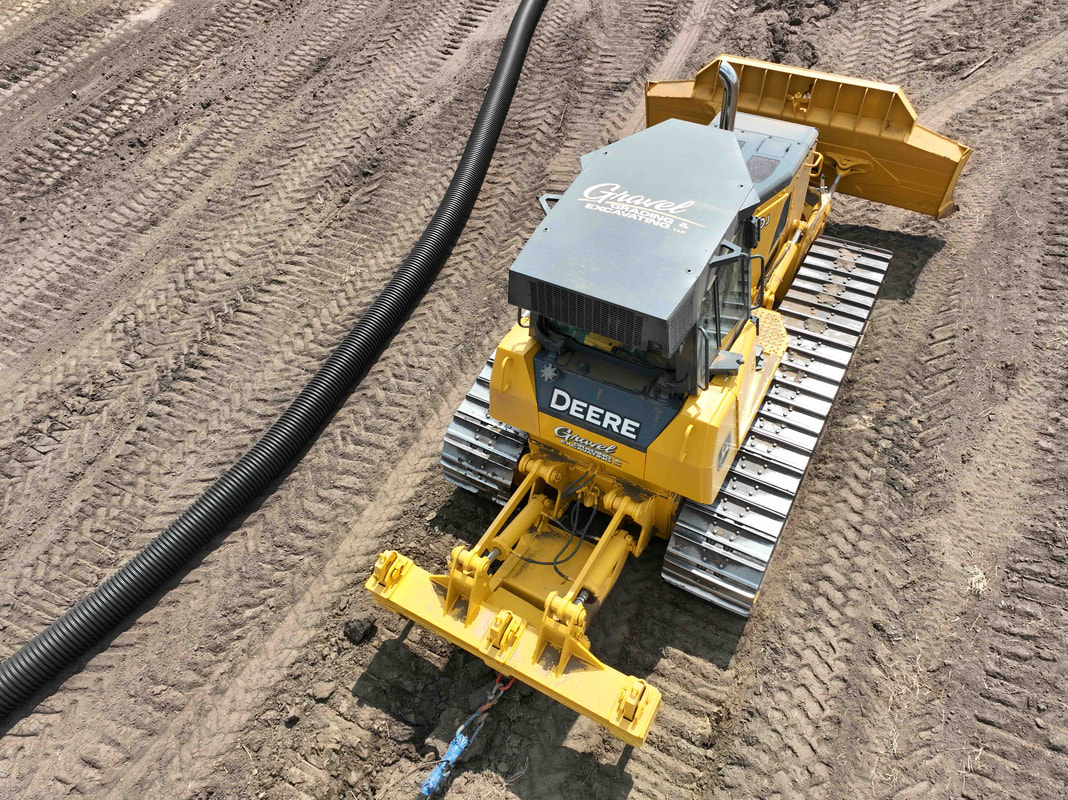
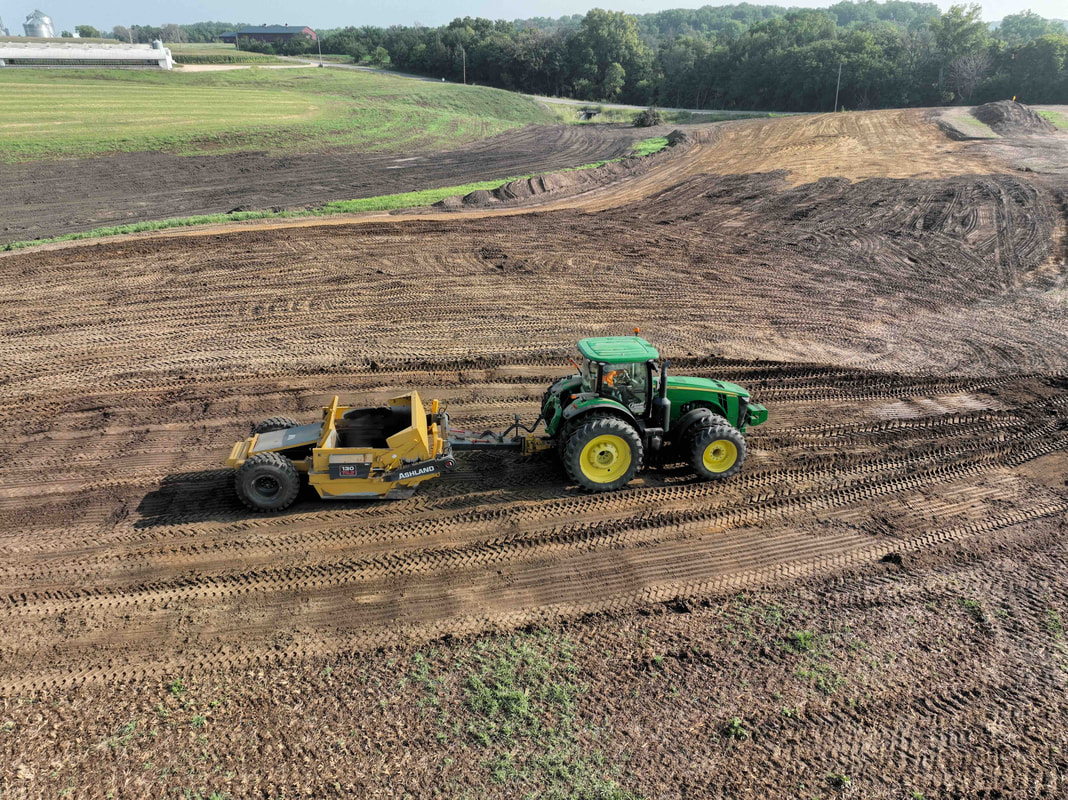
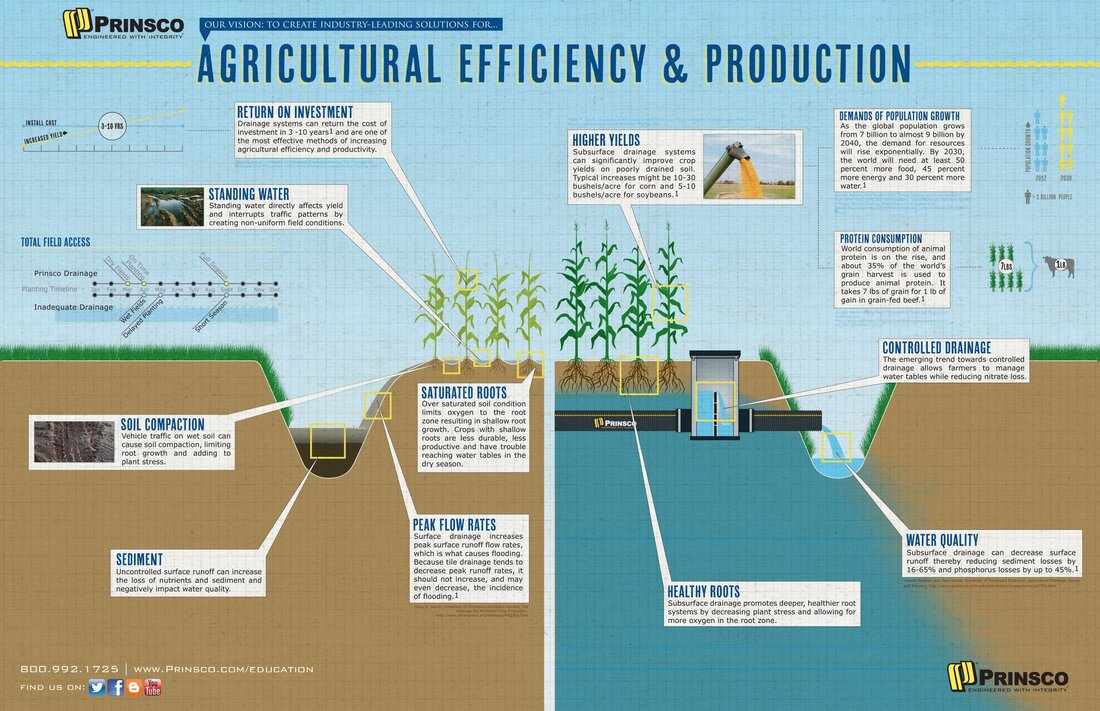
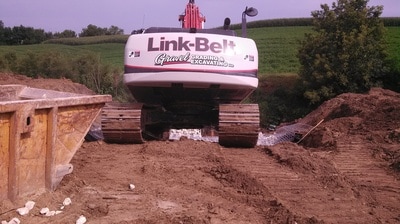
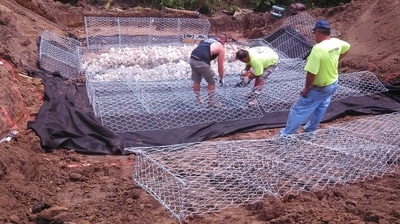
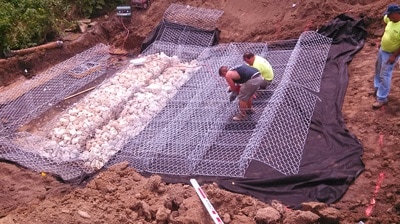

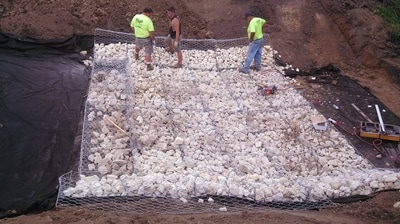
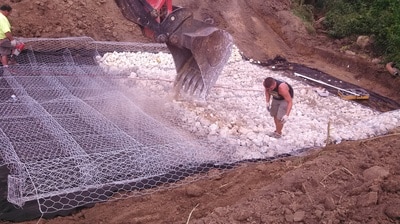
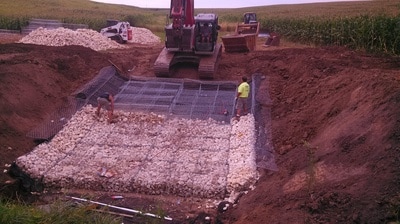
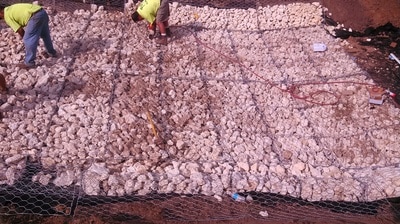
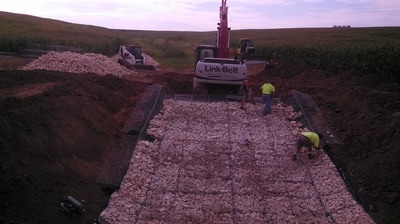
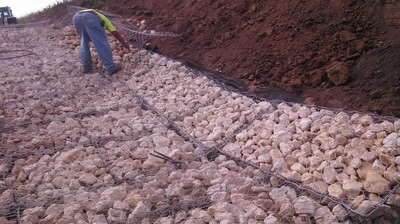
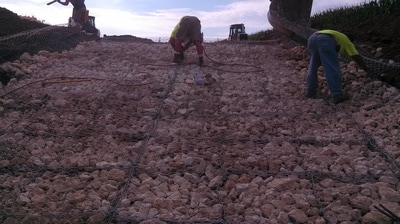
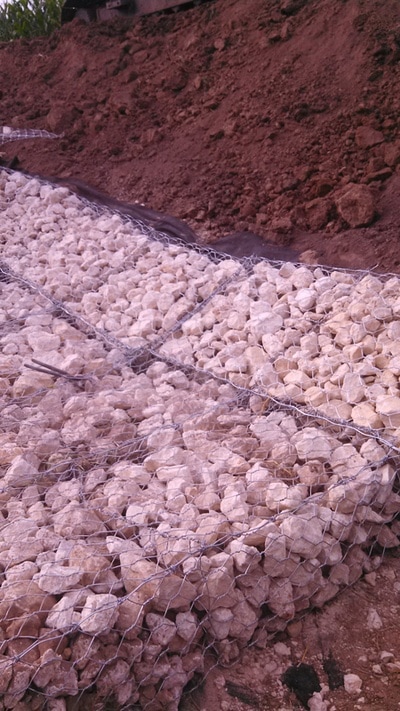
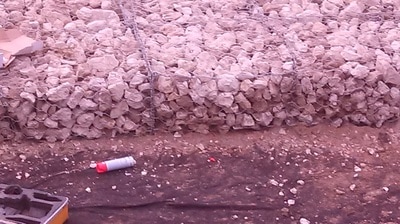
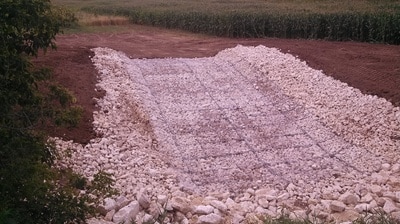
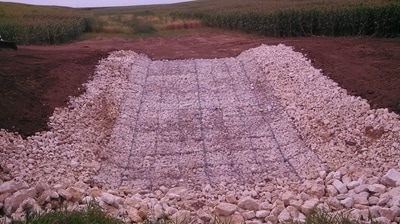
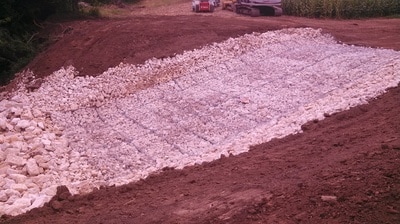
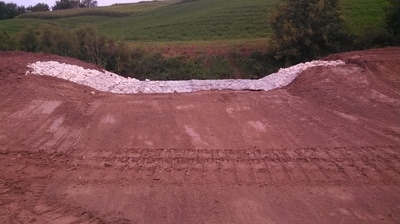
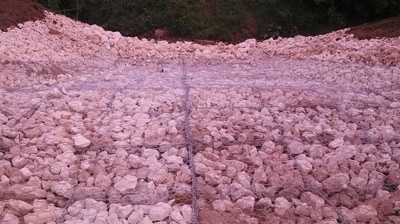
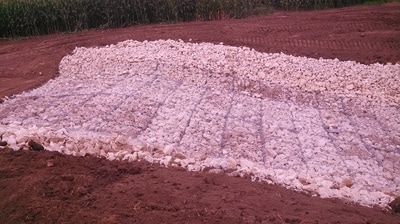
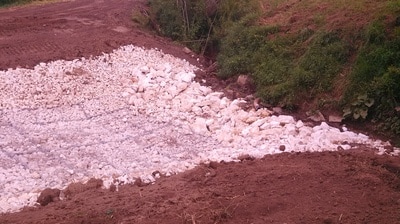
 RSS Feed
RSS Feed
